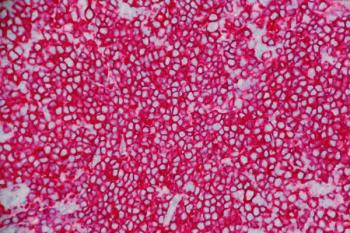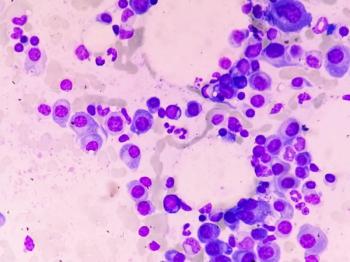
Combination Pneumococcal Vaccine Prophylaxis in Splenectomy
Patients can be aided by health care providers with preventable measures to reduce the chance of infectious risk.
Regulating immune homeostasis is an essential function of the spleen. This lymphopoietic organ contains a quarter of the body’s lymphoid tissue involved in opsonization, in which invading bacterial particles are targeted and phagocytized.1
The loss of blood filtering through the spleen diminishes the triggering effect of innate and adaptive immunity that aids in protecting the body against infection, inducing a patient’s vulnerability to invasive infections caused by encapsulated bacteria (eg,
Patients can be aided by health care providers with preventable measures to reduce the chance of infectious risk. This includes determining the appropriateness of vaccinations, timing, the number of doses as decided by previous vaccination history, adverse reactions, patient age, and diagnosis.1
More than 90 different serotypes of S pneumoniae have been identified, each encompassed in a polysaccharide capsule differing in their antigenic variation.1 Currently, 2 vaccines target against S. pneumoniae: 23-valent pneumococcal polysaccharide vaccine (PPSV23) and 13-valent pneumococcal conjugate vaccine (PCV13).3
PPSV23 contains antigens from 23 serotypes most commonly responsible for 85%-90% of cases of pneumococcal disease, whereas PCV13 carriers 12 of the 13 serotypes contained in PPSV23.1,3 Vaccine design differs in the number of serotypes covered and the addition of a covalently conjugated protein carrier to PCV13. Each elicit immunity through a B-cell mediated immunity differing in T-cell interactions.4
Purified polysaccharide antigens induced by PPSV23 generate a T-independent activation of B-cells, leading to a poor immune response, lacking memory cells with modest affinity of mostly IgM antibodies that tend to wane over time. Conjugation of a carrier protein to the polysaccharide in PCV13 T-dependent activation of B-cells promotes specific antigens with a higher affinity to elicit a more robust and longer lasting immunity.4,5
The Advisory Committee on Immunization Practices (ACIP) recommends routine use of PCV13 in addition to PPSV23 for adults with immunocompromising conditions such as functional or anatomic asplenia. PCV13 has been used in pediatric immunization since 2010, an identical formulation of 7 serotypes in PCV7 with an additional 6 antigens.6
Routine use of PCV7 in pediatric immunizations resulted in significant reduction in invasive pneumococcal disease (IPD) with an indirect effect benefiting adults. Although, the serotypes not included in PCV7 remained high in certain immunocompromised populations.
Among immunocompromised cases of IPD, 50% of the serotypes are contained in PCV13, and 21% in PPSV23. Immunogenic studies comparing antibody responses to PCV13 and PPSV23 was the basis for approval by the FDA in 2011.6
Evaluating immunological response in adults, Jackson LA et al compared baseline opsonophagocytic activity (OPA) antibodies commonly associated as an adequate threshold for vaccine-induced protection. PCV13 compared to PPSV23 a month after vaccination demonstrated a statistically significant higher mean OPA titers in PCV13 for 8 of the 12 common serotypes.
Persistence of immunity 1 year after vaccination declined in both groups. However, OPA remained above pre-vaccination baseline in the PCV13 group, providing an enhanced immunogenicity and support the potential for improved clinical efficacy.5
Vaccination is the mainstay in the prevention of infectious disease. Asplenia, regardless of etiology, puts patients at higher risk for serious or life-threatening infections due to encapsulated bacteria, and patients should be educated on the management of possible risks.
Serious illnesses due to S pneumoniae (bacteremia, meningitis, and pneumonia) place a high burden on adults in the United States. ACIP recommendations are based on the potential benefits outweighing harm due to IPD, providing broader protection of serotypes through use of both pneumococcal vaccines.
References
1. Kuchar, E., Miśkiewicz, K. and Karlikowska, M. (2015), A review of guidance on immunization in persons with defective or deficient splenic function. Br J Haematol, 171: 683-694.
2. Bonanni P, Grazzini M, Niccolai G, et al. Recommended vaccinations for asplenic and hyposplenic adult patients. Hum Vaccin Immunother. 2017;13(2):359-368.
3. Hayward S, Thompson LA, McEachern A. Is 13-Valent Pneumococcal Conjugate Vaccine (PCV13) Combined With 23-Valent Pneumococcal Polysaccharide Vaccine (PPSV23) Superior to PPSV23 Alone for Reducing Incidence or Severity of Pneumonia in Older Adults? A Clin-IQ. J Patient Cent Res Rev. 2016;3(2):111-115.
4. Clutterbuck EA, Lazarus R, Yu LM, et al. Pneumococcal conjugate and plain polysaccharide vaccines have divergent effects on antigen-specific B cells. J Infect Dis. 2012;205(9):1408-1416.
5. Jackson LA, Gurtman A, van Cleeff M, et al. Immunogenicity and safety of a 13-valent pneumococcal conjugate vaccine compared to a 23-valent pneumococcal polysaccharide vaccine in pneumococcal vaccine-naive adults. Vaccine. 2013;31(35):3577-3584.
6. Centers for Disease Control and Prevention (CDC). Use of 13-valent pneumococcal conjugate vaccine and 23-valent pneumococcal polysaccharide vaccine for adults with immunocompromising conditions: recommendations of the Advisory Committee on Immunization Practices (ACIP). MMWR Morb Mortal Wkly Rep. 2012;61(40):816-819.
Newsletter
Stay informed on drug updates, treatment guidelines, and pharmacy practice trends—subscribe to Pharmacy Times for weekly clinical insights.














































































































































































































